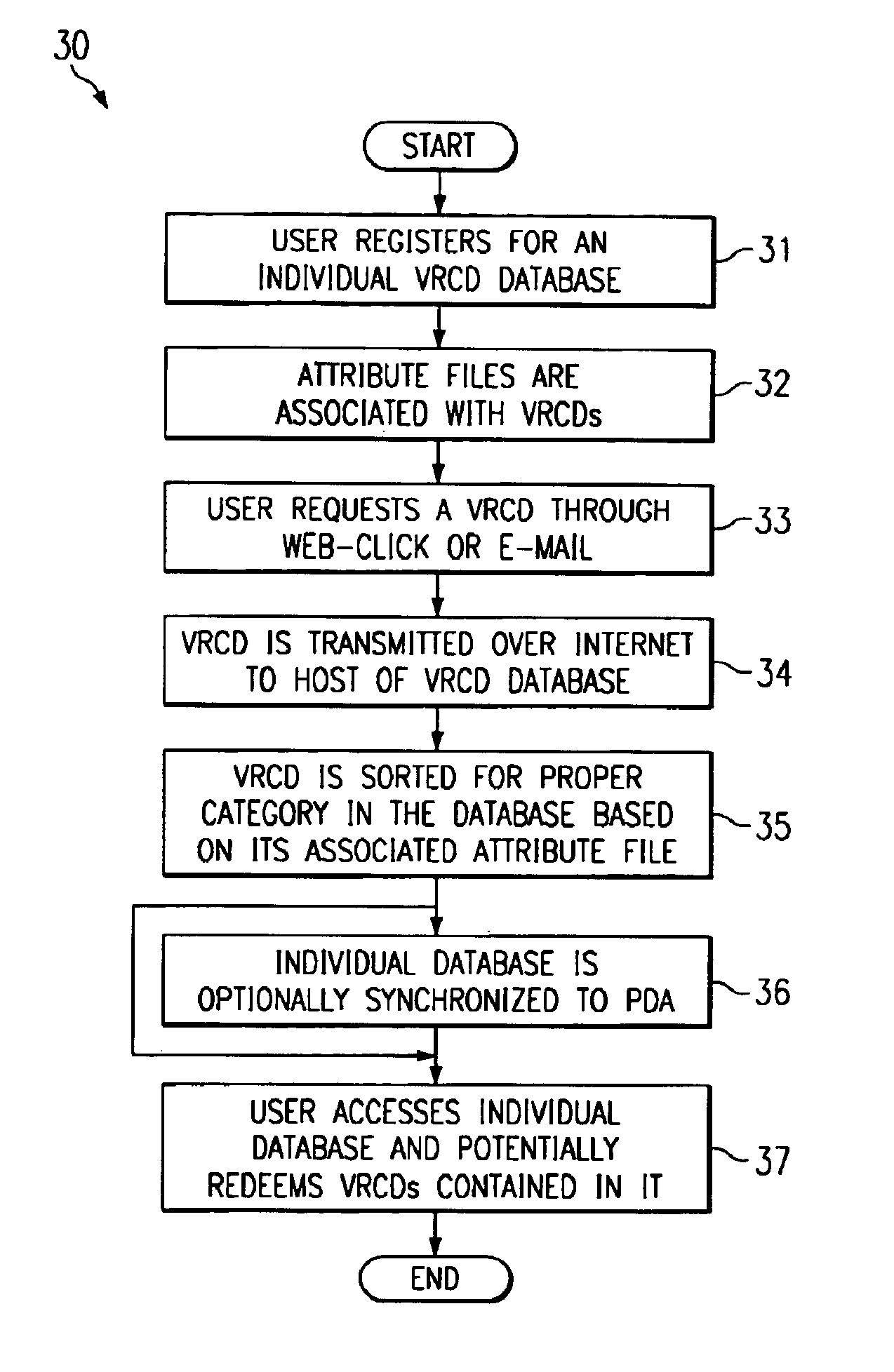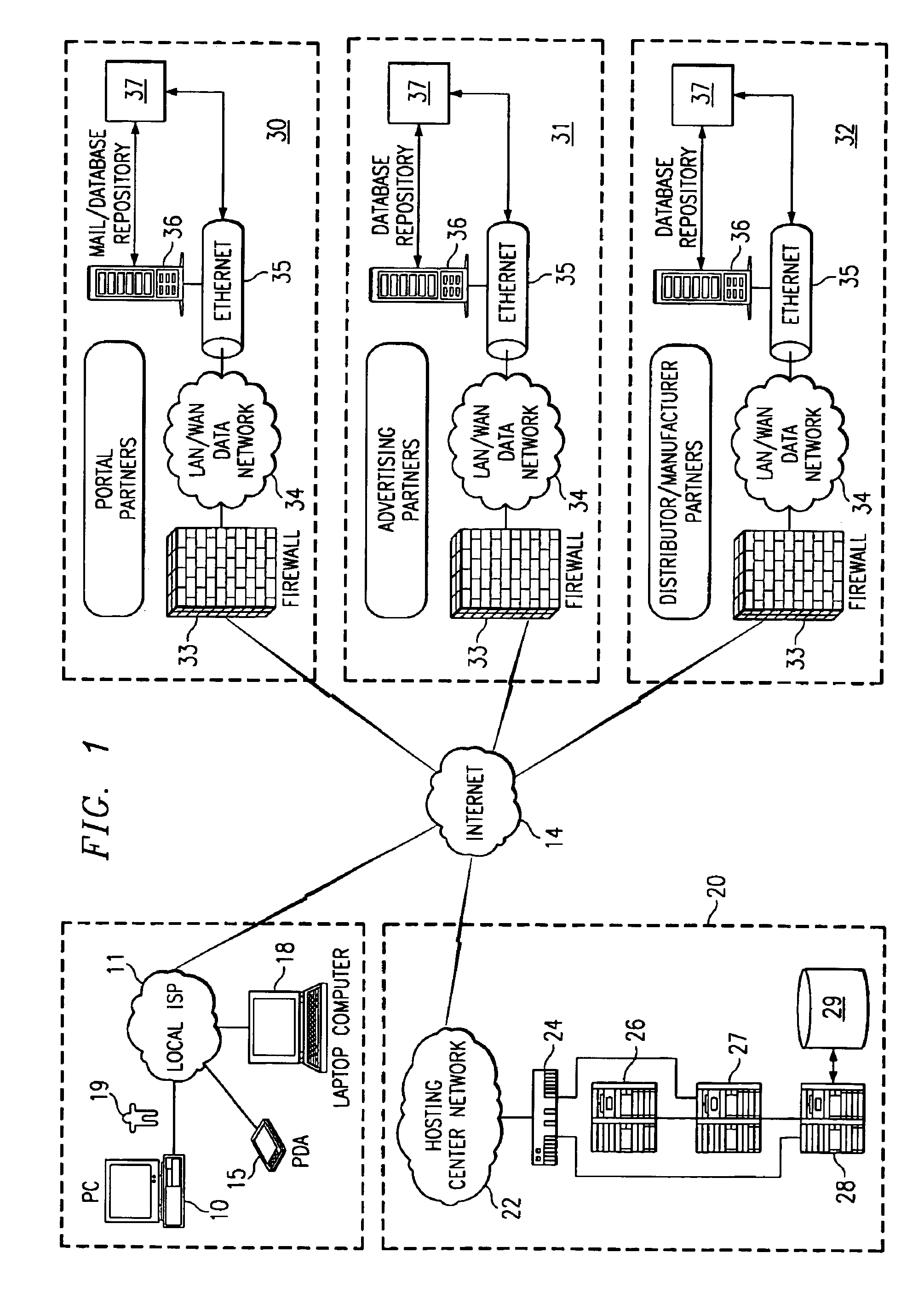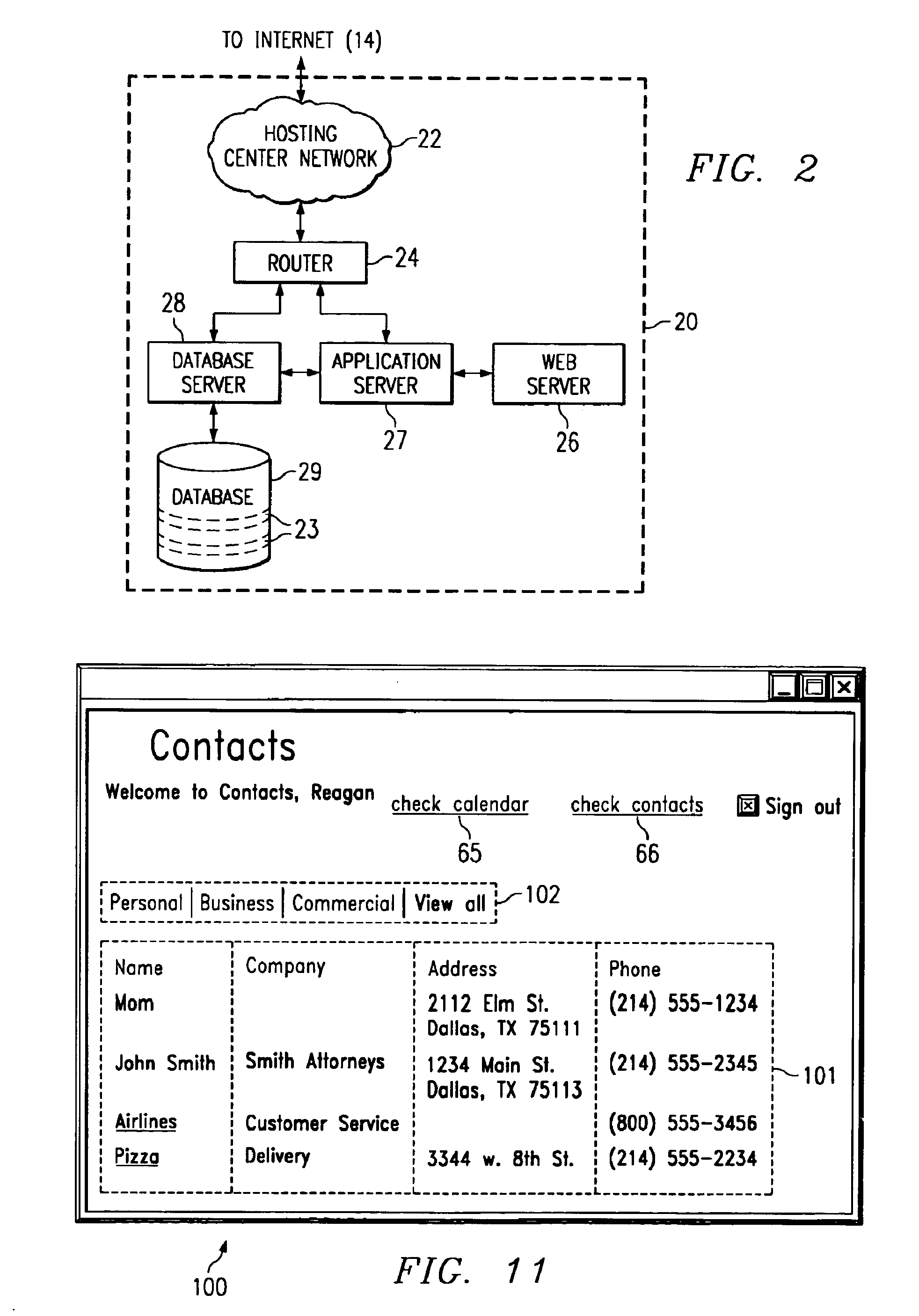Virtual document organizer system and method
a document organizer and virtual document technology, applied in the kitchen drawer, can solve the problems of cumbersome and difficult organizing of paper documents, cumbersome and difficult organizing of virtual documents, and organizers and contact managers are not well-suited to maintaining retail collateral documents of the type listed abov
- Summary
- Abstract
- Description
- Claims
- Application Information
AI Technical Summary
Benefits of technology
Problems solved by technology
Method used
Image
Examples
Embodiment Construction
Described is a system and method for distributing, collecting, and organizing Virtual Retail Collateral Documents (“VRCDs”), including virtual documents like merchant coupons, product warranties, sales confirmations and receipts, product instructions, service instructions, rebates, gift certificates, product registration cards, event tickets, credit card statements, bank statements, internet sites user names and passwords, and recipes. These VRCDs may be delivered to an Internet user or other network user via email, banner ads, interactive television, digital phones, or other digital method, thus further adding to the organizational challenge for the consumer.
The application described below addresses these challenges through a web-based, electronic document management system that organizes and integrates VRCDs on an Internet-connected computer. As discussed below, this web-based electronic document management system can be accessed via handheld / PDA device or a personal computer-like...
PUM
 Login to View More
Login to View More Abstract
Description
Claims
Application Information
 Login to View More
Login to View More - R&D
- Intellectual Property
- Life Sciences
- Materials
- Tech Scout
- Unparalleled Data Quality
- Higher Quality Content
- 60% Fewer Hallucinations
Browse by: Latest US Patents, China's latest patents, Technical Efficacy Thesaurus, Application Domain, Technology Topic, Popular Technical Reports.
© 2025 PatSnap. All rights reserved.Legal|Privacy policy|Modern Slavery Act Transparency Statement|Sitemap|About US| Contact US: help@patsnap.com



